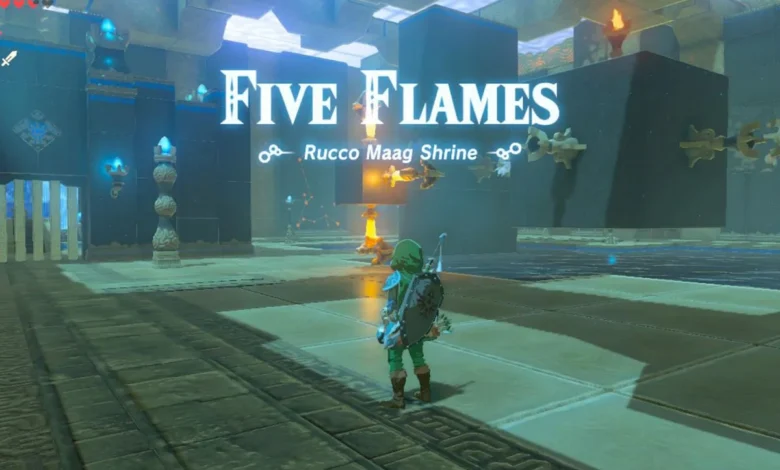What is Rucco Maag Shrine? History, Culture, and Spirituality

Introduction
The Rucco Maag Shrine, nestled in a serene and picturesque landscape, is a beacon of history, culture, and spirituality. This sacred site, which has attracted pilgrims and tourists alike, holds a profound significance that transcends time. In this article, we will delve into the origins, architectural marvels, cultural relevance, and the spiritual essence of the Rucco Maag Shrine.
Historical Background
Origins and Legends
The origins of the Rucco Maag Shrine are shrouded in myth and legend. According to local lore, the shrine was established in the early medieval period, around the 7th century AD. It is said that a revered sage, Maag, received divine inspiration to build a sanctuary dedicated to the gods. The name “Rucco” is believed to have been derived from an ancient word meaning “sacred” or “holy place.”
Early Construction and Expansion
Initially, the shrine was a modest structure made of locally available materials. However, as its spiritual significance grew, so did its physical manifestation. Over the centuries, successive generations of devotees and rulers contributed to the expansion and beautification of the Rucco Maag Shrine. By the 12th century, it had transformed into a grand complex, featuring intricate carvings, expansive courtyards, and towering spires.
Architectural Marvels
Design and Layout
The Rucco Maag Shrine is an architectural masterpiece that reflects the artistic and engineering prowess of its time. The shrine’s layout is a harmonious blend of symmetry and symbolism, with each element designed to convey a deeper spiritual meaning. The main sanctum, or “garbhagriha,” houses the principal deity and is surrounded by a series of smaller shrines dedicated to various gods and goddesses.
Artistic Elements
One of the most striking features of the Rucco Maag Shrine is its elaborate carvings and sculptures. These artworks depict scenes from ancient myths, everyday life, and celestial beings, showcasing the rich cultural heritage of the region. The intricate designs on the pillars, ceilings, and walls are a testament to the skill and creativity of the artisans who worked on the shrine.
Structural Innovations
The architects of the Rucco Maag Shrine employed several innovative techniques to ensure the stability and longevity of the structure. The use of interlocking stones, advanced drainage systems, and earthquake-resistant designs are some of the methods that have helped preserve the shrine through the ages.
Read More: Everything You Need to Know About Online Football Betting
Cultural Significance
Festivals and Celebrations
The Rucco Maag Shrine is a vibrant hub of cultural activity, especially during festivals. The most significant of these is the annual “Maag Utsav,” a grand celebration that attracts thousands of pilgrims and tourists. The festival features elaborate rituals, music, dance, and a variety of traditional performances that highlight the cultural richness of the region.
Role in Community Life
Beyond its spiritual importance, the Rucco Maag Shrine plays a central role in the social and cultural life of the local community. It serves as a venue for important life events such as weddings, naming ceremonies, and other rites of passage. The shrine also hosts educational programs, workshops, and cultural exhibitions, fostering a sense of community and continuity.
Spiritual Essence
Pilgrimage and Devotion
For many, visiting the Rucco Maag Shrine is a deeply spiritual experience. Pilgrims undertake long and arduous journeys to seek blessings, offer prayers, and perform rituals. The act of pilgrimage itself is seen as a form of devotion, reflecting the enduring faith and reverence that people have for this sacred site.
Mystical Experiences
There are numerous accounts of mystical experiences and miracles associated with the Rucco Maag Shrine. From miraculous healings to divine visions, these stories add to the shrine’s mystique and allure. While skeptics may question these claims, for the devout, they are a testament to the shrine’s spiritual power.
Meditation and Contemplation
The serene and tranquil environment of the Rucco Maag Shrine makes it an ideal place for meditation and contemplation. Many visitors come here to find inner peace, connect with their spiritual selves, and seek guidance. The shrine’s atmosphere, steeped in centuries of devotion and reverence, provides a perfect setting for such practices.
Preservation and Challenges
Conservation Efforts
Preserving the Rucco Maag Shrine for future generations is a priority for both the local community and heritage organizations. Conservation efforts include regular maintenance, restoration of damaged artworks, and measures to protect the site from environmental threats. Advanced technologies, such as 3D scanning and digital archiving, are also being used to document and preserve the shrine’s intricate details.
Balancing Tradition and Modernity
One of the significant challenges in preserving the Rucco Maag Shrine is balancing tradition with modernity. While it is essential to maintain the shrine’s historical and cultural integrity, there is also a need to accommodate the growing number of visitors and modern amenities. Efforts are being made to develop sustainable tourism practices that respect the shrine’s sanctity while providing necessary facilities for pilgrims and tourists.
Read More: The Four Types of Poker Hands
Visitor Experience
Accessibility and Facilities
It is accessible to visitors year-round, with the peak season being during the major festivals. The site offers various amenities, including guided tours, information centers, and accommodation facilities for pilgrims. Efforts are also being made to improve accessibility for elderly and differently-abled visitors, ensuring that everyone can experience the shrine’s spiritual and cultural offerings.
Guided Tours and Educational Programs
To enhance the visitor experience, it offers guided tours and educational programs. These tours provide insights into the shrine’s history, architecture, and cultural significance, allowing visitors to appreciate its beauty and heritage more deeply. Educational programs, including workshops and lectures, are also organized to promote understanding and appreciation of the shrine’s cultural and spiritual importance.
Economic Impact
Tourism and Local Economy
The Rucco Maag Shrine is a significant driver of tourism in the region, contributing to the local economy. The influx of pilgrims and tourists creates employment opportunities and supports local businesses, including hotels, restaurants, and handicraft shops. The shrine’s popularity also encourages the development of infrastructure and services, benefiting the broader community.
Sustainable Tourism Practices
To ensure that tourism at the Rucco Maag Shrine is sustainable, efforts are being made to promote responsible travel practices. This includes educating visitors about the cultural and environmental significance of the site, encouraging eco-friendly practices, and implementing measures to manage visitor impact. By promoting sustainable tourism, the aim is to preserve the shrine’s integrity while supporting the local economy.
Comparative Analysis: Rucco Maag Shrine and Other Iconic Shrines
Similarities and Differences
To provide a broader perspective, it is valuable to compare the Rucco Maag Shrine with other iconic shrines around the world. While each shrine has its unique characteristics, they share common themes of spirituality, cultural significance, and architectural brilliance.
| Feature | Rucco Maag Shrine | Shrine of Our Lady of Guadalupe (Mexico) | Meiji Shrine (Japan) | Harmandir Sahib (India) |
|---|---|---|---|---|
| Origins | 7th century AD | 16th century AD | 20th century AD | 16th century AD |
| Primary Deity | Local Deities | Virgin Mary | Emperor Meiji and Empress Shoken | Guru Granth Sahib |
| Architectural Style | Ancient Indian | Baroque and Modern | Shinto | Sikh |
| Major Festival | Maag Utsav | Feast of Our Lady of Guadalupe | Spring and Autumn Festivals | Vaisakhi |
| Pilgrimage Significance | High | Very High | High | Very High |
| Cultural Impact | Regional | Global | National | Global |
Future Prospects
Enhancing Visitor Experience
Looking ahead, there are plans to enhance the visitor experience at the Rucco Maag Shrine further. This includes developing new visitor facilities, expanding educational programs, and leveraging digital technologies to provide virtual tours and interactive experiences. By embracing innovation, the aim is to make the shrine more accessible and engaging for a global audience.
Preservation Initiatives
Ongoing and future preservation initiatives will focus on maintaining the shrine’s physical structure and its cultural and spiritual heritage. This includes continuing conservation efforts, promoting sustainable tourism, and fostering community involvement in preservation activities. By working together, stakeholders can ensure that the Rucco Maag Shrine remains a cherished and revered site for generations to come.
Frequently Asked Questions
1. What is the Rucco Maag Shrine?
It is a historic and sacred site known for its spiritual, cultural, and architectural significance. Established in the 7th century AD, it has grown to become a major pilgrimage destination and a symbol of cultural heritage.
2. Where is the Rucco Maag Shrine located?
It is situated in a picturesque and serene region, though the exact location is not specified here. It is accessible to visitors from all over the world and offers a peaceful environment for pilgrimage and tourism.
3. What is the historical significance of the Rucco Maag Shrine?
The Rucco Maag Shrine has a rich history dating back to the early medieval period. It was founded by a sage named Maag, who was divinely inspired to build a sanctuary. Over the centuries, the shrine has been expanded and embellished by various generations, making it a treasure trove of historical and cultural heritage.
4. What architectural features make the Rucco Maag Shrine unique?
The shrine is renowned for its intricate carvings, elaborate sculptures, and innovative structural designs. Key features include the main sanctum (garbhagriha), symmetrical layout, and detailed artworks depicting mythological scenes and daily life.
5. What festivals are celebrated at the Rucco Maag Shrine?
The most significant festival is the Maag Utsav, an annual celebration that draws thousands of pilgrims and tourists. The festival includes rituals, music, dance, and traditional performances, highlighting the cultural richness of the region.
Conclusion
The Rucco Maag Shrine stands as a testament to the enduring power of faith, the richness of cultural heritage, and the brilliance of ancient architecture. Its historical significance, architectural marvels, cultural relevance, and spiritual essence make it a unique and cherished site. As we look to the future, it is crucial to balance preservation with accessibility, ensuring that this sacred place continues to inspire and enlighten visitors from around the world.
Whether you are a pilgrim seeking spiritual solace, a history enthusiast eager to explore ancient heritage, or a traveler in search of beauty and tranquility, the Rucco Maag Shrine offers a profound and enriching experience. Its timeless appeal, rooted in centuries of devotion and reverence, beckons all who seek to connect with something greater than themselves.


